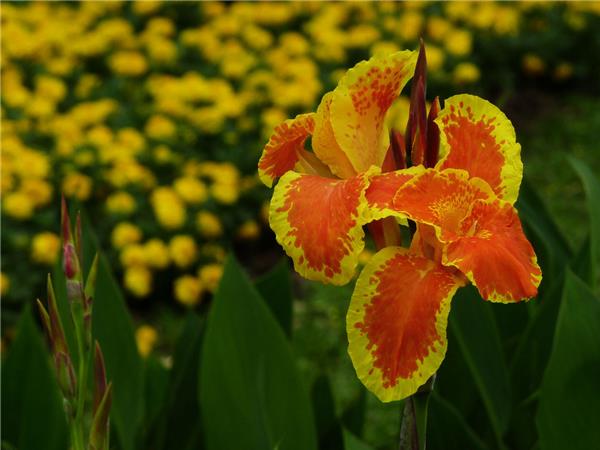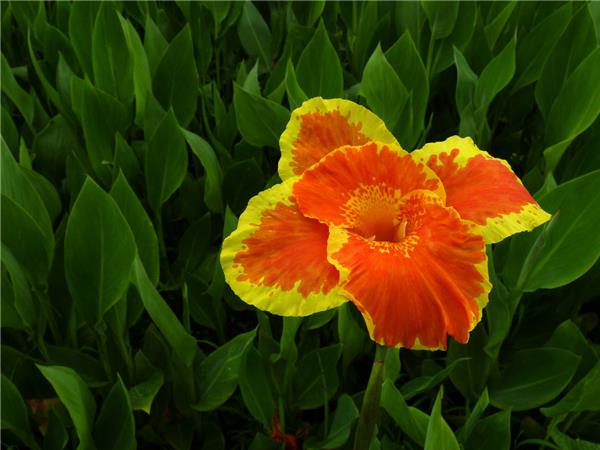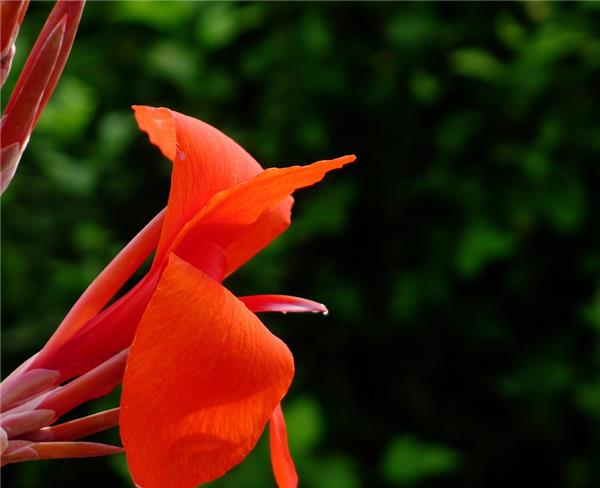Methods of potted banana flowers and ground-grown banana flowers
Canna is a kind of flower with high ornamental value, which can often be seen in landscape design. Although canna is mostly planted in the ground, potted plants are also possible.

Matters needing attention in the Culture of potted Canna
1. Pot canna, first of all to choose a suitable variety, dwarf varieties are the most suitable for potted plants. Pot maintenance should start from the selection of roots and stems, and pay more attention to master the cultivation techniques of each growth link. The rhizome was dug from March to April in spring, and the rotten part was trimmed and cut into several pieces according to the size of the rhizome and the number of stem buds. The incision should be smooth, and after cutting, it should be coated with plant ash or charcoal powder, and then planted separately.
two。 When potted canna is planted, the budding treatment in greenhouse can bloom earlier. During the operation, the old root should be covered with wet sand or loose peat soil from February to March, so that the rhizome should be covered properly and germinated at 16 ℃. When the buds on the rhizome germinate, the old stem is cut into several pieces, each with more than one bud, planted in a flowerpot with a diameter of 10 to 12 centimeters, and the pot is changed again in April. According to the actual situation, a flowerpot with a diameter of 15 to 20 centimeters can be used. It was moved to outdoor maintenance in the middle of May or planted in the open field, and it could blossom from July to August.
3. Canna likes fertilizer and resistance to moisture. The basin soil should be mixed with rotten leaf soil, garden soil, peat soil, mountain mud and other soil rich in organic matter, and applied bean cake, bone meal and other organic fertilizer as base fertilizer.

4. Watering thoroughly for the first time after separate planting, and always keep the basin soil moist. When it grows to 5-6 leaves, liquid fertilizer should be applied every 10-15 days. Liquid fertilizer can be used with mature thin bean cake water and add appropriate amount of ferrous sulfate. Compound fertilizer solution can also be used, the concentration should be light, generally 0.3% is appropriate, and fertilization should be stopped when flowering.
5. During flowering, the flowerpot should be moved to a shady place to prolong the flowering period. After the flower fades, the flower stem should be cut off in time to promote its germination of new buds, flower branches, and continue to blossom.
6. Potted canna sometimes shows scorched and yellowed leaves, mainly due to excessive application of ferrous sulfate or exposure to drought and hot sun. In the hot summer, if poured too cold water will also cause the leaf edge scorch, such as in the heat of summer fertilization is too thick, there will be cauterization of the rhizome to "burn". Therefore, when the temperature is more than 40 ℃, the canna can be moved to a cool and ventilated place. Before and after Frosts Descent, the potted canna can be moved to a temperature of 5: 10 ℃ to survive the winter safely, and fertilization should be stopped during the overwintering period.

The overwintering method of planting Canna Flower in the ground
1. Before and after Frosts Descent, after the ground part of the locally planted canna died, the withered leaves were cut off, the underground rhizomes were dug out, slightly dried, and placed under the north wall of the house, using the stratification method. The law should regularly check whether the humidity is too high, the temperature is too low or too high, in order to prevent decay and early germination.
two。 Before and after Frosts Descent cut off the dead part of the planted canna on a sunny day and let the wound dry naturally. In the evening, turn the soil within 30 centimeters around the root with a spade, mix with some rotten compost, pile up a small mound and bury the underground part. This method mainly makes use of the characteristics of mature compost, such as loose compost, good permeability and heat emission after being exposed to moisture, so as to play a role in heat preservation.
3. Plant treatment is the same as above, but do not turn the soil around the root, nor compost, but cover the root with sawdust, withered straw, weeds and so on, and then cover the cover with a thin layer of soil. After the local part withered, the withered branches and rotten leaves were removed and covered directly with plant ash or mixed with the soil around the roots, which could also achieve a good effect of heat preservation and overwintering.

Generally speaking, the cultivation techniques needed for the cultivation of canna are relatively simple. Moisturizing, light preservation and heat preservation can make them grow into beautiful plants healthily.
Related
- Wuhan Hospital Iron Tree Blooming Result Was Instantly Frightened by the Gardener Master
- Which variety of camellia is the most fragrant and best? Which one do you like best?
- What is the small blue coat, the breeding methods and matters needing attention of the succulent plant
- Dormancy time and maintenance management of succulent plants during dormancy
- Minas succulent how to raise, Minas succulent plant pictures
- What are the varieties of winter succulent plants
- How to raise succulent plants in twelve rolls? let's take a look at some experience of breeding twelve rolls.
- Attention should be paid to water control for succulent plants during dormant period (winter and summer)
- Watering experience of twelve rolls of succulent plants
- Techniques for fertilizing succulent plants. An article will let you know how to fertilize succulent plants.



